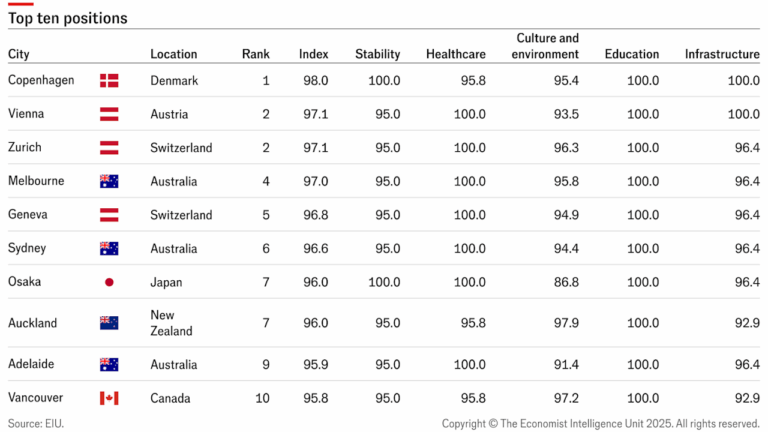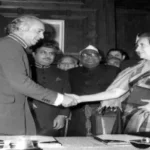How DNA Identification Works: Science, Forensics, and Public Trust
Why in the News?
In June 2025, an Air India Dreamliner aircraft crashed near Ahmedabad, killing all passengers on board. Due to the intensity of the crash, many victims’ bodies were mutilated beyond recognition. In such cases, traditional identification methods like visual confirmation or fingerprints prove insufficient.
- Authorities resorted to DNA-based identification to match the remains with reference samples obtained from family members and personal belongings.
- This method, though time-consuming and resource-intensive, ensured precise identification and reinforced public awareness about the power and limitations of DNA forensics.
- The incident has reignited national discussions on strengthening forensic capabilities, implementing legal safeguards, and modernising the infrastructure required for timely and ethical DNA identification, especially in a populous and disaster-prone country like India.

Background: What Is DNA and Why Is It Unique?
Deoxyribonucleic Acid (DNA) -The Blueprint of Life
DNA is a long, double-helix molecule composed of four nucleotide bases: Adenine (A), Thymine (T), Cytosine (C), and Guanine (G). These bases form specific sequences that carry genetic instructions for building and operating an organism. The entire DNA sequence of an individual is referred to as their genome.
- Every individual’s DNA is unique, except for monozygotic (identical) twins.
- Human cells, except for red blood cells, contain DNA, primarily within the nucleus and mitochondria.
- This uniqueness makes DNA an ideal tool for identifying individuals when other methods fail.
Use of DNA in Forensic Identification
DNA fingerprinting, also known as DNA profiling or typing, was first developed in 1984 by British geneticist Alec Jeffreys. Since then, it has become the gold standard for forensic investigations worldwide.
- In India, it is increasingly being used in criminal cases, paternity tests, and mass disaster identification.
- The core idea is simple: if a DNA sample from an unknown body can be matched to a sample from a known individual (or their relative), identity can be confirmed with a high level of accuracy.
Features: How DNA Identification Works in Practice
Sample Collection
- From Deceased Individuals: Tissues such as blood, muscle, hair follicles, teeth, and bones can be used. In severely degraded conditions, bones and teeth are the most reliable sources.
- From Families: Buccal swabs (cheek cells) or personal items like toothbrushes, razors, or combs can provide usable reference samples.
DNA Extraction and Amplification
- The DNA is carefully extracted using chemical solutions or mechanical disruption methods.
- The quantity is often small or degraded, especially in disaster cases. Therefore, Polymerase Chain Reaction (PCR) is used to amplify the DNA, making billions of copies for easier analysis.
Methods of DNA Analysis
Short Tandem Repeat (STR) Analysis
- Focuses on specific regions of the DNA that contain short, repeating sequences.
- These repeats vary significantly among individuals.
- STR analysis is the most widely used method and forms the backbone of most national DNA databases.
Mitochondrial DNA (mtDNA) Analysis
- Mitochondria are cell structures with their DNA, passed down only through the maternal line.
- mtDNA is more robust in degraded samples and useful when nuclear DNA is not available.
- It can trace lineage, but is less unique than STR.
Y-Chromosome Analysis
- Target markers on the Y chromosome, inherited father-to-son.
- Especially useful for identifying male individuals when paternal relatives are available for reference.
Single Nucleotide Polymorphism (SNP) Analysis
- Focuses on minute variations at single-nucleotide points.
- Effective in severely degraded DNA.
- It can be used to distinguish between close relatives and enhance discriminatory power.
Matching and Reporting
- DNA sequences are compared using software algorithms.
- A statistical probability is calculated to express the likelihood that the samples come from the same individual or family.
- Results are peer-reviewed and documented in detailed forensic reports.
Challenges: Scientific, Legal, and Ethical Hurdles
Sample Degradation and Quality
- In cases involving fire, drowning, or prolonged exposure, DNA can degrade beyond usability.
- Such conditions may necessitate advanced methods like mtDNA or SNP, which are more expensive and less accessible.
Infrastructure Limitations
- India has very few accredited high-throughput DNA labs capable of handling large volumes during disasters.
- Many states lack even basic forensic labs, leading to delays in testing and reporting.
- Transporting samples across states can further degrade the sample quality due to poor preservation protocols.
Privacy and Data Protection
- DNA carries sensitive personal information, including genetic predisposition to diseases.
- India does not yet have a comprehensive Data Protection Law that governs the collection, use, and storage of DNA profiles.
- In the absence of legal safeguards, concerns about state surveillance, misuse by private parties, and wrongful profiling remain high.
Lack of Legal Framework
- The DNA Technology (Use and Application) Regulation Bill, 2019, aims to regulate DNA usage but has not yet been enacted.
- In the absence of a legal mechanism, guidelines remain fragmented and vary across investigative agencies.
Costs and Delays
- DNA testing is expensive, with each test costing anywhere between ₹5,000 to ₹25,000.
- Mass identification efforts, such as in aviation accidents or natural disasters, involve high cumulative costs.
- Testing, matching, verification, and reporting take time, delaying closure for families.
Capacity and Training Gaps
- There is a shortage of trained forensic professionals in India.
- First responders and police personnel often mishandle biological samples, leading to contamination or degradation.
Public Trust and Misinformation
- People are often reluctant to provide DNA samples, fearing surveillance or misuse.
- Awareness about how forensic DNA identification works remains low, particularly in rural areas.
Way Forward: Strengthening Forensic Science for 21st Century India
Enact Robust Legal Frameworks
- Expedite the passage of the DNA Technology Regulation Bill.
- Include provisions for consent, oversight, appeal mechanisms, and penalties for misuse.
- Align the framework with the upcoming Digital Personal Data Protection Act.
Establish Regional DNA Laboratories
- Set up advanced, accredited forensic labs in every zone or state under public-private partnerships (PPP).
- Link labs with disaster management authorities and hospitals for real-time coordination.
Standardise Collection and Chain of Custody Protocols
- Create a unified national protocol for biological sample collection, transport, and storage.
- Provide body cameras and forensic kits to field personnel to ensure accountability.
Capacity Building and Training
- Train police, paramedics, and disaster response teams on handling biological evidence.
- Launch postgraduate courses in forensic genomics and bioinformatics.
Promote Awareness and Trust
- Run multilingual awareness campaigns on the humane and legal uses of DNA.
- Clarify that forensic DNA profiling only targets identity markers, not disease or ancestry.
Leverage Technology and AI
- Use artificial intelligence (AI) and machine learning (ML) tools to speed up matching processes.
- Create anonymised national databases for faster disaster identification using secure blockchain storage.
Humanitarian Focus in Disaster Contexts
- Integrate DNA identification into National Disaster Management Authority (NDMA) protocols.
- Create a “DNA Assistance Desk” for families during mass casualty events, offering counselling and legal support.
Conclusion
The use of DNA in forensic identification is a testament to the power of science in delivering truth, justice, and closure in the face of human tragedy. While India has made significant strides in DNA technology adoption, the Air India crash has once again exposed gaps in infrastructure, legal clarity, and public trust.
Moving forward, India must treat DNA forensics not merely as a technological tool but as a pillar of humane governance, guided by transparency, ethics, and constitutional protections. With the right investments, laws, and education, DNA profiling can become a cornerstone of India’s efforts in disaster response, law enforcement, and human rights protection.
FAQs: DNA Identification
1. What is DNA identification?
Ans. DNA identification is the process of matching DNA samples from unidentified remains or crime scenes to known sources such as relatives or personal belongings to establish identity.
2. Why is DNA more reliable than visual identification?
Ans. DNA is unique to each individual (except identical twins), making it highly accurate even when visual features are unrecognisable due to decomposition, burns, or trauma.
3. What is the role of DNA in disaster victim identification (DVI)?
Ans.In mass casualties, DNA helps authorities confirm identities where fingerprints or facial recognition are impossible. It provides closure to families and aids in legal processes.
MAIN PRACTICE QUESTION
QUESTION: How does DNA-based identification work, and what are its key applications and challenges in the Indian context? Discuss recent incidents involving disaster victim identification.
PRELIMS PRACTICE QUESTION
Q.About DNA identification, consider the following statements:
- Short Tandem Repeat (STR) analysis targets mitochondrial DNA and is highly useful in degraded samples.
- Y-STR analysis can be used to establish maternal lineage across generations.
- Single-nucleotide polymorphism (SNP) analysis is suitable when only degraded DNA is available.
Which of the statements given above is/are correct?







